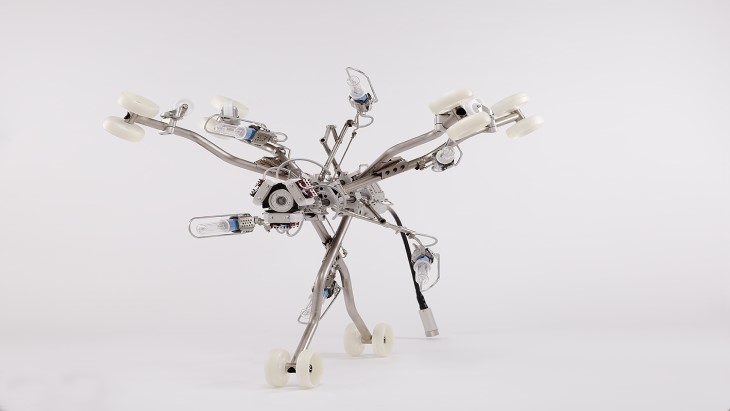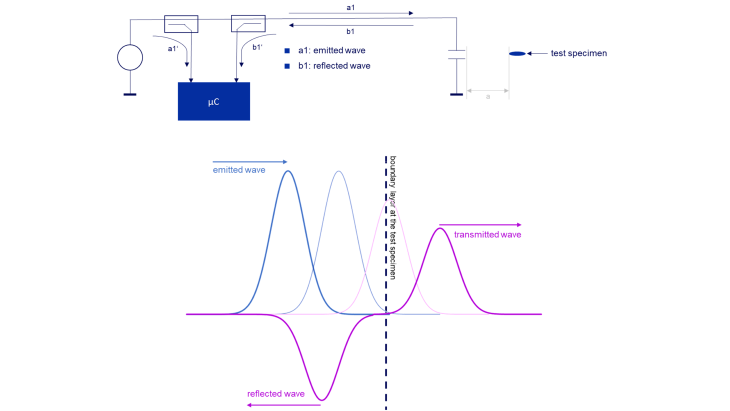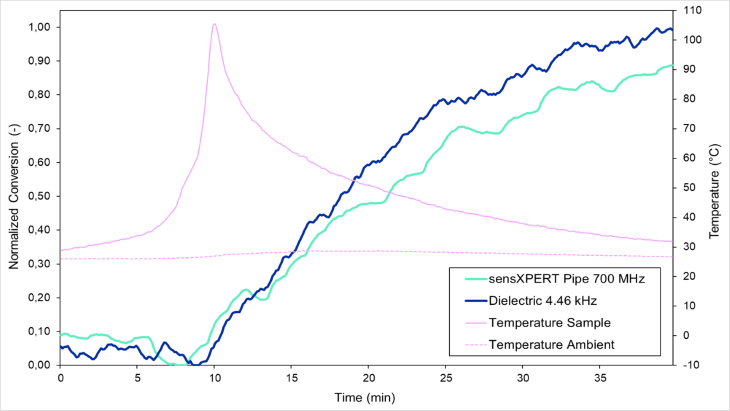Contactless Measurement of Plastics and Fiber Composites Crosslinking
For about 20 years, the plastics industry has witnessed the coming together of measurement technology and processing. Technical process control challenges, along with a resulting desire for transparency in process technology, brought about initial investments in sensor technology and software tools. This generated certain added value, but desired outcomes often failed to materialize for participating companies. The products offered were either too complex to handle or not sufficiently solution oriented. This was largely due to the lack of overarching cooperation between partners along the value chain. Additionally, a fear of losing competitive advantage fueled an unwillingness to share knowledge, thus limiting the capacity to work with one another on solutions.

With the onset of the age of digitalization, awareness of new possibilities and technological advances developed rapidly. This also influenced industry and triggered the interconnection of various solutions. Regarding plastics processing, this means that raw material suppliers, equipment manufacturers, solution providers, and end customers must work together and share knowledge on new solutions to generate transparency and ensure process reliability.
The Founding of NETZSCH Process Intelligence GmbH
With over 150 years of experience in traditional mechanical and plant engineering, the NETZSCH Group is all too familiar with the above-mentioned trends. Simultaneously, NETZSCH has been driving digital solutions and business models for several years using incredible commitment and financial investments to merge tradition with digitization.
Consequently, in 2021, NETZSCH Process Intelligence GmbH was created to combine the knowledge gained from over 60 years of experience in material characterization with real process environments. Founded by NETZSCH Group, the new company expanded the NETZSCH portfolio by including intelligent products for the “industrial plastics processing” and “construction” market segments.
sensXPERT Pipe
One such product, sensXPERT Pipe, was developed for trenchless sewer rehabilitation. sensXPERT Pipe characterizes the progress of plastics crosslinking by means of a contactless sensor system. The first series implementation of the patent-pending technology for trenchless sewer rehabilitation was set up by NETZSCH Process Intelligence GmbH in a 2-year project with ProKASRO Mechatronik GmbH.
This technology is made possible by high-frequency electromagnetic fields that can freely propagate through a vacuum, and hence also in air, but are impacted by liquids and solids. The influence is shown by the fact that an electromagnetic wave entering the material changes its amplitude and frequency as it moves through the measured medium (Figure 1). To ensure mobility, sensXPERT Pipe uses a sensor as both transmitter and receiver, as well as utilizes the response of the reflected wave (labeled ‘reflected wave’ in the figure).

Figure 1: sensXPERT Pipe measuring principle.
Therefore, this allows for the determination of critical parameters, such as degree of cure or glass transition temperature, to assess the quality of plastics. For trenchless sewer rehabilitation, this means that sensXPERT Pipe – being a mobile measuring system – can continuously monitor the crosslinking progress of the liner, thus allowing for greater control over the pulling speed. NETZSCH Process Intelligence GmbH and ProKASRO Mechatronik GmbH presented the integrated solution at RO-KA-TECH 2023 and described the technology in a previous article.
Comparing Dielectric and Contactless High-Frequency Measurements
The following section details a comparison that was conducted on the new sensXPERT Pipe technology and the established dielectric analysis measurement method, as is applied in our sensXPERT Digital Mold solution.
For comparison purposes, we utilized a chemically complex two-component epoxy resin – typically used for chemical dowels in the construction industry. The decision to use this resin system to demonstrate the measurement principle is due to the challenge it presents. The system is highly viscous and does not flow, and, therefore, does not form a smooth surface. In addition, the resin reacts very slowly and presents very little change in the measurement signals. With a lack of applied pressure, the result is an asymmetrical sample of resin peaks and air valleys. Most measuring systems require highly uniform and even samples, but sensXPERT Pipe was primarily developed for construction site use and difficult conditions.
The crosslinking process was investigated simultaneously using classic dielectric and high-frequency measurements. For the dielectric measurements, a NETZSCH DEA288 Ionic with an IDEX115-L disposable sensor was used. The sensor was in direct contact with the epoxy resin and placed below the sample. The sensXPERT Pipe’s contactless, high-frequency sensor was positioned 15mm above the sample. The measuring frequency used in the dielectric investigation was 4.46 kHz, as this is the critical frequency above which parasitic polarization effects that negatively impact the measurement no longer occur with the chosen resin system. For the sensXPERT Pipe investigation, a measuring frequency of 700 MHz was used. Both measuring systems create a glimpse into material behavior, specifically through the lens of dipole orientation.
Figure 2 presents the crosslinking curve of the dielectric measurement (dark blue), the high-frequency measurement (turquoise blue), as well as the sample temperature (solid pink) and ambient temperature (dashed pink). It is evident that both measuring principles show matching results for the pot life of about 10 minutes and the subsequent crosslinking process. The normalized conversion is related to the total reaction, the end of which is delayed for a larger period – past the 40-minute mark shown in the figure below. Therefore, only the most interesting measuring range is presented in Figure 2.

Figure 2: Dielectric and high-frequency measurement on an epoxy resin sample.
Through the curve progression of both measurement principles, it is clear that the contactless, high-frequency measurement had a more sensitive reaction to the sample change about 15 minutes into the measurement. This is reflected through the lower conversion until the 40-minute measurement time is reached. The reason for this is that the disposable sensors used for the dielectric measurement can only penetrate 100 µm into the material, whereas the high-frequency technology penetrates the material as a whole and detects crosslinking throughout the entire sample thickness. This sensitivity ensures that the measuring system is ideally suited to monitor the conditions of the liners in a construction site, as well as to support on-site quality assurance.
sensXPERT Pipe will, for the first time, be used on ProKASRO UV systems and will control the tensile speed of UV cores based on the crosslinking progress of UV liners. The first ProKASRO systems equipped with sensXPERT Pipe are expected to roll out in Spring 2024.